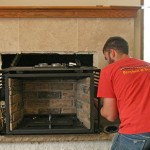Can You Add a Fireplace to a House?
Adding a fireplace to an existing home can be a significant undertaking, but it's certainly possible with careful planning and execution. Whether you're seeking to enhance the aesthetic appeal, increase energy efficiency, or simply create a cozy gathering space, a fireplace can provide a multitude of benefits. However, before embarking on this project, it's essential to understand the complexities involved and the factors that determine feasibility.
Assessing Existing Structure and Building Codes
The first step in determining whether a fireplace can be added to your home is to assess the existing structure and local building codes. A structural engineer can evaluate the load-bearing capacity of your home's foundation, walls, and roof to ensure they can support the weight of a fireplace and its chimney. Furthermore, local building codes dictate specific regulations regarding fireplace installation, including chimney height, fire safety clearances, and ventilation requirements. These regulations can vary widely depending on your location, so consulting your local building department is crucial before proceeding.
Considering the Type of Fireplace
The type of fireplace you choose will significantly impact the installation process and cost. Traditional masonry fireplaces are known for their aesthetic appeal and heat output, but they often require extensive construction and can be costly. Alternatively, pre-fabricated fireplaces are more budget-friendly, easier to install, and require less structural modification. Gas fireplaces offer convenience and efficient heating, while electric fireplaces provide a decorative flame effect without the need for a chimney. Choosing the right type of fireplace will depend on your budget, desired aesthetic, and heating needs.
Factors Influencing Installation Feasibility
Several factors can influence the feasibility of adding a fireplace to your house. The most critical factor is the location. Installing a fireplace typically involves creating a new opening in an existing wall, which may require structural reinforcement. Furthermore, the proximity of existing plumbing, electrical wiring, and ductwork must be carefully considered to avoid conflicts. Access to the exterior wall for chimney installation is also crucial. If your home lacks external access or has a complex roofline, the cost and complexity of chimney construction can increase significantly. Lastly, the size of the existing fireplace opening, if any, will affect the type and size of fireplace that can be installed. If you are considering adding a fireplace to a room without an existing opening, you will need to factor in the cost of creating one, which can be substantial.
The Process of Adding a Fireplace
Adding a fireplace involves several steps, including:
- Obtaining necessary permits from your local building department.
- Demolishing existing structures, if applicable.
- Creating a new opening in the wall for the fireplace.
- Installing the fireplace unit, including hearth, firebox, and surround.
- Constructing a chimney, if required.
- Connecting the fireplace to the gas or electrical system, if applicable.
- Installing a fireproof barrier, including a hearth and chimney liner.
- Finalizing the aesthetic elements, such as the mantel and surround.
- Performing a final inspection by the building department.
The specific steps and their complexity will vary depending on the type of fireplace, the existing structure, and local building codes. It's essential to work with qualified professionals throughout the process, including a structural engineer, a licensed contractor, and a fireplace specialist.
Cost Considerations
The cost of adding a fireplace to a house can vary significantly depending on several factors, including:
- The type of fireplace: Traditional masonry fireplaces are typically the most expensive, followed by pre-fabricated fireplaces, gas fireplaces, and electric fireplaces.
- The complexity of the installation: Factors such as structural modifications, chimney construction, and access to the exterior wall can all increase costs.
- The size and design of the fireplace: Larger and more ornate fireplaces will naturally be more expensive.
- The cost of labor in your area: Labor costs can vary widely depending on your location.
It's essential to obtain quotes from multiple reputable contractors before making a decision. Be sure to ask for detailed breakdowns of the costs involved, including materials, labor, permits, and inspections.

Adding A Fireplace To Existing Home Where For Fireplaces

Your Home Doesn T Have A Fireplace And You Want To Add One

Installing A New Fireplace Albers Fire Places

Does A Fireplace Add Value To House Vertical Chimney Care

Remodelaholic Living Room Remodel Adding A Fireplace And Built In Bookshelves Remodeling

Add A Fireplace To Your Space Modernize

5 Reasons To Add A Fireplace Your Home

Tips For Adding A Gas Fireplace To Your Home St Louis Hvac

Fireplace Replacement In Utah Croft
No Fireplace In Your Home Add One Heatilator
Related Posts








